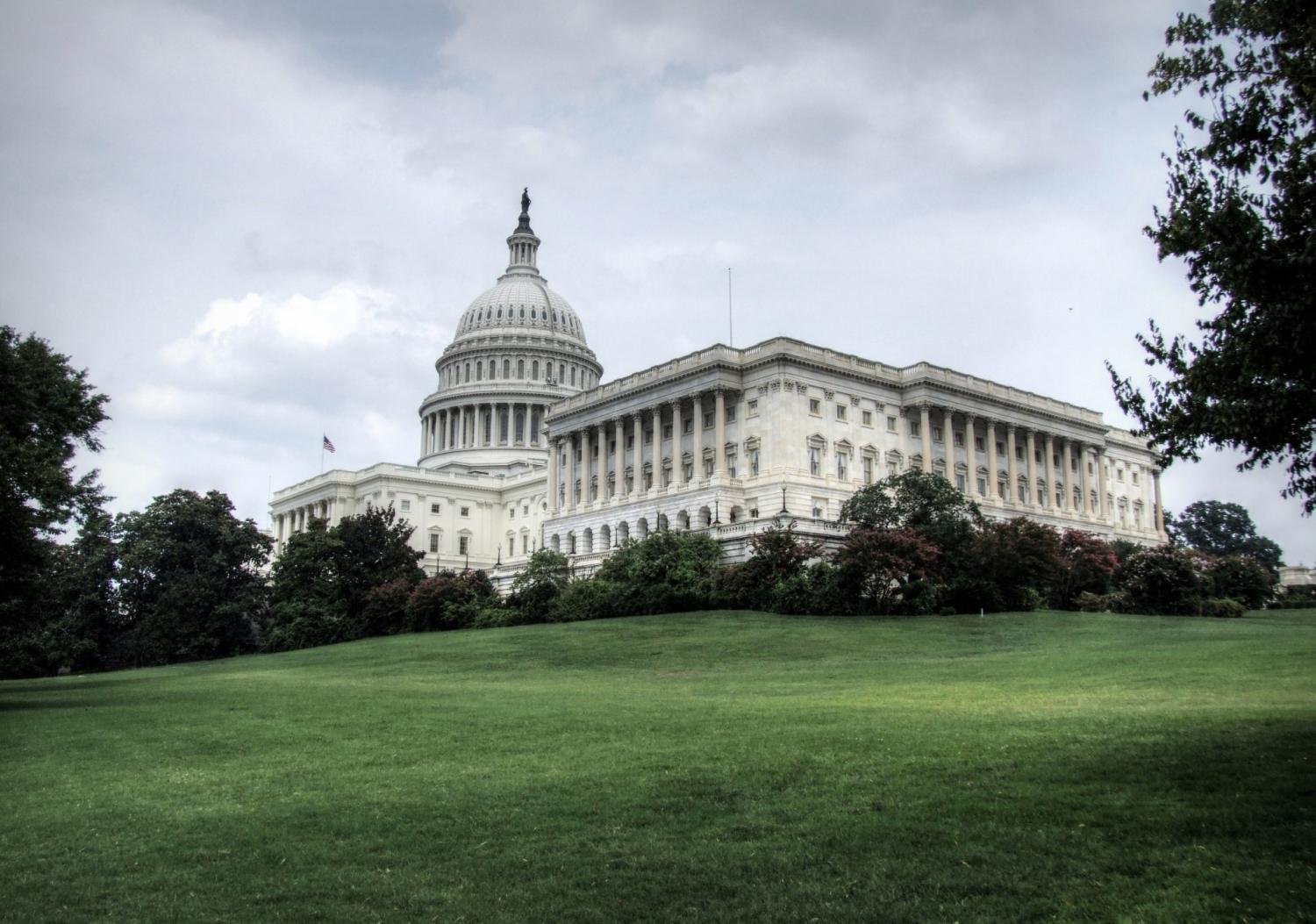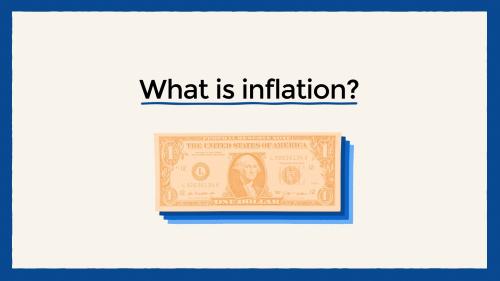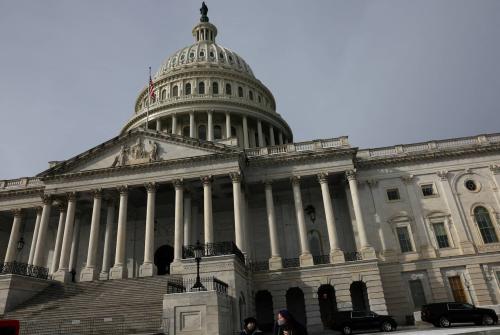The following brief is part of Brookings Big Ideas for America–an institution-wide initiative in which Brookings scholars have identified the biggest issues facing the country and provide ideas for how to address them.
Following are recommendations, as well as the economic analysis and value judgments that are the basis for those recommendations.
During the next decade, I think we should allow federal debt to rise as a percentage of GDP in line with what would happen under current law, but should shift the composition of the budget by increasing federal investment above what would occur under current law and paying for that increase with cuts in benefits for higher-income retirees and hikes in tax revenue. I also think we should enact larger cuts in benefits and increases in taxes to be phased in beyond the next decade so that debt declines gradually relative to GDP in the long term. Moreover, we should strengthen the automatic stabilizers in order to moderate the next economic downturn.
The first issue is the path of debt. Under current law, federal debt is projected by the Congressional Budget Office (CBO) to rise from 77 percent of GDP currently to 86 percent by the end of the decade and more than 100 percent 25 years from now. For comparison, debt averaged 39 percent of GDP over the past 50 years and was 35 percent in 2007 before the crisis.
Federal debt cannot increase indefinitely relative to the size of the economy, so current law regarding federal spending and revenues is not sustainable. Moreover, even if debt stops rising at some point, allowing debt to stay so high would have significant costs. Federal debt can crowd out private capital investment. Also, high debt reduces the “fiscal space” for responding to unexpected developments. If we hit another financial crisis or severe recession with debt at 77 percent or 86 percent of GDP rather than 35 percent, our options will be more constrained. Those points argue, all else equal, for reducing federal debt by a lot and for doing so quickly.
Under current law, federal debt is projected by the Congressional Budget Office (CBO) to rise from 77 percent of GDP currently to 86 percent by the end of the decade and more than 100 percent 25 years from now.
However, all else is not equal: interest rates on Treasury securities are very low by historical standards and will probably remain low for a prolonged period. The yield on 10-year Treasury notes was 8 percent at the end of 1990, 5 percent at the end of 2000, and 2 percent at the end of 2015—with CBO and a number of other analysts now predicting that the 10-year yield will rise only to about 3½ percent in the coming years, and many financial-market participants appearing to expect it to remain below that. That is a sea change in the economic backdrop for fiscal policy, and it has come into focus just in the past few years.
There are many possible explanations for why Treasury rates may remain much lower than historical norms, and different explanations have different implications for the optimal amount of federal debt. It is well understood that lower interest rates improve debt dynamics: For any given paths of revenues and noninterest spending, lower interest rates mean that debt will be lower. But it is not well understood how low rates should affect the amount of debt we should aim for. Together with Brookings senior fellow Louise Sheiner, I have analyzed alternative explanations for low Treasury rates and the implications of each for budget policy.1 We found that most explanations imply that the country should have a higher debt-to-GDP ratio than otherwise—and also that federal investment should be higher than otherwise. The intuition for these results is that interest rates show the direct cost to the Treasury of its borrowing and provide information about the indirect cost to the economy of Treasury borrowing—and if costs will be persistently much lower than we are accustomed to, then more borrowing, especially for investment, passes a cost-benefit test.
To be sure, interest-rate projections are very uncertain, and policymaking should be mindful of the risk that rates will rise above current expectations—especially because many large changes in fiscal policy are best made slowly. But we should not ignore a good deal of evidence that rates will probably be much lower than in the past.
In balancing those competing considerations, my judgment is that we should let debt rise gradually over the coming decade in line with what would happen under current law because the costs of doing so appear quite small and the benefits of maintaining or raising certain kinds of spending would be considerable. However, I think we should enact policy changes now that will reduce debt relative to GDP in the long run so that the changes can be phased in gradually and with a lot of advance notice.
How about the composition of the budget? The second part of my recommendations is to increase federal investment.
The traditional categories of federal investment are infrastructure, education and training, and R&D. Under the current caps on annual appropriations, federal non-defense investments of those sorts soon will be smaller relative to GDP than at any time in at least 50 years.
That is not forward-looking, growth-oriented budget policy. Cutting federal investments will reduce total output and income relative to what they would otherwise be. Moreover, cutting federal investment in education and training will reduce the incomes of lower- and middle-income people who are dependent on government help to have a real opportunity to advance. And with low Treasury interest rates, we should be doing more federal investment than otherwise. Therefore, in my view, we should raise the caps on non-defense appropriations substantially, in order to maintain federal investment as a share of GDP.
We should also work to increase the return on federal investments. Sometimes we build critical transportation links, and sometimes we build bridges to nowhere; sometimes education funding supports a breakthrough in a person’s life, and sometimes it is dissipated. We can do better. For example, we should increase the role of careful cost-benefit analysis in deciding which specific investments to undertake.
It is also important to understand that some federal spending outside those traditional categories represents an investment in future income, especially for lower-income people. There is a small but growing body of evidence that certain benefits for lower-income families—such as health-care benefits and housing subsidies—raise future incomes of some young people. We should protect those investments as well.
The third piece of my recommendations is that we should reduce benefits for higher-income retirees but not for lower-income retirees or working-age people. I come to that view based on two sets of facts and one value judgment.
One set of facts is about the evolution of the federal budget under current law. If we look ahead 25 years, spending for Social Security and Medicare will continue to increase relative to GDP, mostly because of the aging of the population: by the time the last baby boomers become eligible for Social Security and Medicare, there will be more than 75 million beneficiaries of those programs, two-thirds more than the number just before the first boomers became eligible for early retirement benefits. Those beneficiaries will be more than one-fifth of the U.S. population. Meanwhile, defense spending is declining relative to GDP and, under current law, in a few years will be a smaller percentage of GDP than anyone can remember. All other non-interest spending taken together is about the same share of GDP now that it was 25 years ago, and in CBO’s current-law projections, it is about the same share 25 years from now. Of course, there have been important shifts within this very broad category. But the key point is that the rise in federal spending does not stem from general growth in the federal government relative to the size of the economy but instead from a dramatic increase in spending for Social Security and Medicare, with a rising amount of interest payments as well.
By the time the last baby boomers become eligible for Social Security and Medicare, there will be more than 75 million beneficiaries of those programs, two-thirds more than the number just before the first boomers became eligible for early retirement benefits.
The other set of facts is about the evolution of the income distribution. During the past few decades, the incomes of people across most of the distribution have risen quite slowly, while incomes at the high end of the distribution have risen very rapidly. According to estimates by CBO, between 1979 and 2013 market incomes—that is, incomes before taking account of taxes and transfers—rose 18 percent in the bottom quintile of the distribution, 12 percent in the middle quintile, and 85 percent in the top quintile. Those specific numbers substantially understate the true increases in people’s incomes because the data do not fully capture quality improvements or the introduction of new goods and services, such as free digital products available through the Internet. Still, it is clear that most people in the country have gained very little directly from the growth of total output and national income in the past few decades.
The value judgment I make is that federal policies generally should be focused on raising incomes for people of modest means. Combining that value judgment with the facts about the evolution of the income distribution implies that it is especially important at this point in time to do so. And combining that conclusion with the fact that means-tested programs are not the principal obstacle to budget sustainability implies that we should not cut benefits focused on lower-income people. Moreover, I think we should avoid cutting benefits in programs like Social Security and Medicare in across-the-board ways, because such cuts would significantly reduce total retirement income for many lower-income people.
Therefore, I think that reductions in benefits should be focused on better-off beneficiaries of Social Security and Medicare. To be sure, that approach does not offer a free lunch. Making Social Security and Medicare more progressive would weaken the connection between an individual’s taxes and benefits, which could undermine the earned-benefit character of the systems if taken too far. Also, because people with higher incomes would face lower benefits, their incentives to work and save would be reduced. But I think this approach is the best of the available alternatives for restraining federal debt without unduly burdening those Americans who have fared the worst in economic terms in recent years.
I want to comment here about the Affordable Care Act (ACA), which is the biggest expansion of federal means-tested programs in decades. The ACA is significantly increasing the share of Americans who have health insurance, and doing so at a cost of thousands of subsidy dollars per newly insured person and a collection of significant changes in insurance rules. That dollar cost is substantial, but not surprising given the high cost of health care. For context, the ACA subsidies will be only about 10 percent of total federal subsidies for health insurance over the next decade, with much larger subsidies provided through Medicare, Medicaid apart from the ACA, and tax subsidies for employer-provided health insurance. Of course, there are alternative policies regarding health insurance that we could adopt. But there are no policies that would achieve the substantial increase in insurance coverage occurring under the ACA without subsidies and rules similar to those of the ACA—or an even larger federal role. That is an analytic result. Then there is a value judgment about whether the increase in insurance coverage is worth those costs. My judgment is yes, largely because of my concern about the slow income growth at the lower end of the distribution.
The fourth part of my recommendations is to raise tax revenue above what will be collected under current law. There is no realistic way to reduce debt as a percentage of GDP that does not involve more revenue.
Over the next 25 years, spending for Social Security and Medicare is projected to increase by 3.5 percent of GDP, which would represent, for current GDP, more than $600 billion a year. That increase is driven primarily by the retirement of the baby boomers. Costs per beneficiary in Social Security are projected to rise roughly with real wages, as they have in the past few decades; costs per beneficiary in Medicare are projected to rise much more slowly than they have in the past few decades because of a combination of slow growth in payments per procedure under current law, ongoing changes in the health care system, and other factors. As a result, there are few ways to reduce spending that would not be felt directly by beneficiaries, and those beneficiaries generally like those programs a lot. As I mentioned earlier, my own recommendation is to reduce the benefits for better-off retirees, but that would not be nearly large enough to offset all of the increase in costs from the growing number of beneficiaries
Over the next 25 years, spending for Social Security and Medicare is projected to increase by 3.5 percent of GDP, which would represent, for current GDP, more than $600 billion a year.
Meanwhile, the projections under current law show defense spending falling as a percentage of GDP. And, as I said, all other federal spending apart from interest is projected to be the same share of GDP in 25 years that it is today, which is about the same share as it was 25 years ago. At an abstract level, many people want government spending to be cut, but when one drills down to the level of individual programs within that broad category, cutting becomes much more difficult. People want highways repaired, medical research conducted, the borders secured, veterans cared for, food and drugs inspected, and so on. There is no evidence that most people want cuts in spending of the magnitude that would be needed to avoid any revenue increases. The Republicans have controlled the House of Representatives for nearly six years, and the number of bills they have approved that would cut spending substantially—apart from proposed repeal of the Affordable Care Act and the imposition of caps on annual appropriations enacted a few years ago—is zero.
To raise revenues, the natural places to start are to tax carbon emissions and to reduce the deductions and exemptions that narrow the tax base and thereby lower the revenue collected for any given tax rate.
Experts on the climate agree overwhelmingly that we should reduce carbon emissions substantially. Experts on the economy agree overwhelmingly that putting a price on carbon emissions is the most efficient way to reduce emissions. Putting a price on carbon can be achieved through a carbon tax or a cap-and-trade system, and we should establish one or the other.
Economists also agree overwhelmingly that reducing the deductions and exemptions that narrow the tax base would be the most efficient way to increase revenue from the personal income tax, the payroll tax, and the corporate profits tax. Those deductions, exemptions, and related features of the tax code are known as “tax expenditures” because they resemble federal spending in the sense of providing financial assistance for particular activities or to particular entities or groups of people. The revenue lost from all tax expenditures taken together is nearly as large as total revenue from the personal income tax, so considerable revenue could be raised by trimming them. And because those tax provisions can distort individuals’ and businesses’ decisionmaking, reducing the scope or scale of the provisions can improve efficiency.
The fifth part of my recommendations is to build stronger automatic stabilizers into the federal budget and prepare to use discretionary countercyclical fiscal policy.
When the economy falls into recession and unemployment rises, the economic and social costs of the lost output and lost jobs can be very large. Between 2008 and 2015, output was below the potential output of the economy—the amount we could produce if we had maintained nearly full employment—by trillions of dollars cumulatively, and millions of additional people were unemployed each year relative to what would have occurred without the recession.
To fight recessions, we rely on a combination of monetary policy and fiscal policy. In each of the past three recessions, the Federal Reserve has cut the federal funds rate by more than 5 percentage points. However, most current projections of the federal funds rate imply that the rate will stay below 5 percent in the years ahead. Therefore, when the next recession begins, the Federal Reserve will be unable to ease monetary policy nearly as much as it did in each of the three previous recessions.
Therefore, relative to what we have done in the past, we will need larger deficits during downturns and smaller deficits (or surpluses) during booms. Variability in the federal budget can itself be costly, and those costs should be considered in deciding what components of spending and taxes should vary most. For example, variation in tax rates and in the federal share of Medicaid spending probably have smaller costs than variation in infrastructure investment. But the general point is that we should build automatic fiscal stabilizers that are more powerful than existing stabilizers and respond very rapidly, and we should develop plans for discretionary fiscal policies that can be enacted when needed.
Read more in the Brookings Big Ideas for America series »
The author did not receive financial support from any firm or person for this article or from any firm or person with a financial or political interest in this article. He is currently not an officer, director, or board member of any organization with an interest in this article.







